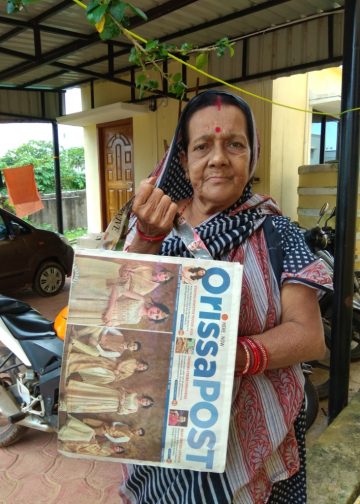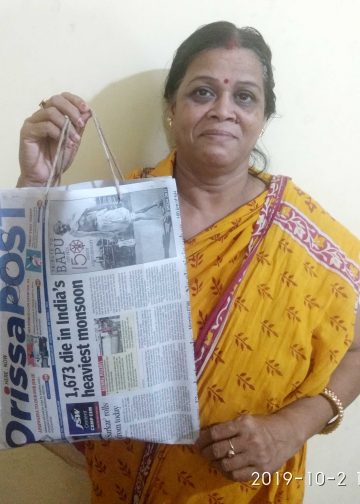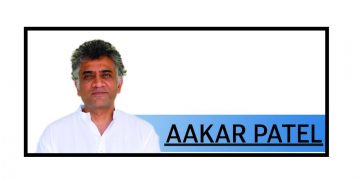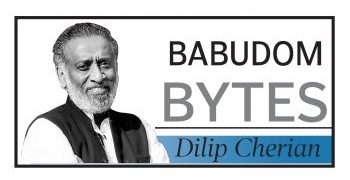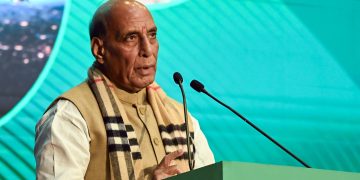Bordered by China to the east and Pakistan to the west, Ladakh holds immense strategic value for India. Yet, more than five years after its separation from Jammu & Kashmir in 2019, Ladakh’s political future remains unclear. The promise of better governance and stronger representation that once excited its residents has, for many, turned sour. That simmering discontent boiled over on the streets in Leh on 24 September, when protesters demanding statehood and constitutional safeguards fell back into violence after two hunger strikers were hospitalised. Irate demonstrators clashed with the police and torched the local office of the ruling BJP — a striking symbol of their deepening anger. Four protesters were killed, apparently in police firing, and scores were left injured.
The Centre views the agitation as untimely and disruptive. Officials accuse local leaders of acting in bad faith, pointing to climate activist Sonam Wangchuk’s hunger strike and suggesting foreign influence behind the unrest. The Ladakh police arrested Wangchuk, a highly respected figure in the region, under the stringent National Security Act (NSA) and shifted him to a prison in faraway Jodhpur in Rajasthan. The police are even probing Wangchuk’s alleged links with Pakistan. However, the protest leaders deny all these allegations, insisting that violence was the work of fringe actors, not the organised movement. As a possibility that too cannot be summarily overruled.
When the Union government revoked Article 370 and carved Ladakh into a Union Territory (UT), the decision was greeted with much celebration in Leh. For years, the Buddhist-majority district had demanded separation from Jammu & Kashmir, where state politics was dominated by leaders from the Valley and Jammu. The creation of a UT was seen as long-awaited recognition. But enthusiasm quickly ebbed as Ladakhis realised that, unlike the new UT of Jammu & Kashmir, their UT would have no legislature. The region lost the four MLAs it had in the erstwhile J&K Assembly, and its administration was placed entirely in the hands of New Delhi–appointed bureaucrats. For many, this was worse than the pre-2019 governance structure.
Also Read: Cost of Ineptness
This disenchantment has been compounded by fears over land rights, jobs, and the preservation of Ladakh’s fragile demography, environment and culture. The changed domicile rules in Jammu & Kashmir heightened anxieties that similar policies could open Ladakh to demographic shifts. As a result, local voices quickly coalesced around demands for stronger constitutional safeguards. Calls grew for full statehood, for protections under the Sixth Schedule of the Constitution — which allows the creation of Autonomous District Councils with legislative and judicial powers — as well as guarantees of jobs and political representation.
These demands are not isolated. The Leh Apex Body and the Kargil Democratic Alliance, umbrella groups representing virtually all political and social constituencies, have repeatedly pressed the Centre for these demands. They have stressed that without clear safeguards, Ladakh’s tribal communities, environment, and cultural heritage face an uncertain future. Yet despite multiple rounds of dialogue, New Delhi has so far delayed concrete decisions. A fresh meeting was scheduled for 6 October, but youth groups insisted that the timeline be advanced and that discussions yield tangible outcomes.
All said and done, one thing is clear that the mistrust between New Delhi and Ladakh has now widened further. This situation calls for careful, measured dialogue rather than confrontation. Ladakh is not just a borderland, it is a critical frontier whose people have always seen themselves as proud Indians. For decades, Ladakhis have defended India’s borders, serving as the first line of resistance against incursions either from China or Pakistan. Branding dissenting Ladakhis as “anti-national,” something this government does with all sorts of dissenters, only hardens alienation.
Ladakh’s people must be assured that their democratic aspirations and cultural identity can be protected without undermining national security. The calls for statehood and Sixth Schedule protections are not unusual for they come within the Constitutional framework. What makes Ladakh unique is that these demands unite both Buddhists and Moslems — an unusual cross-community consensus in a region often portrayed as divided. That unanimity itself should compel the Centre to listen with sincerity to the demands of Ladakhis.
For New Delhi, the Ladakh unrest comes as a big challenge, especially in the wake of its botched handling of the crisis in Manipur which continues to burn even after two and a half years since ethnic violence broke out in the northeastern state. Such unrests in strategically vital regions within the borders of the country compound the problems already created due to New Delhi’s misguided foreign policy
































